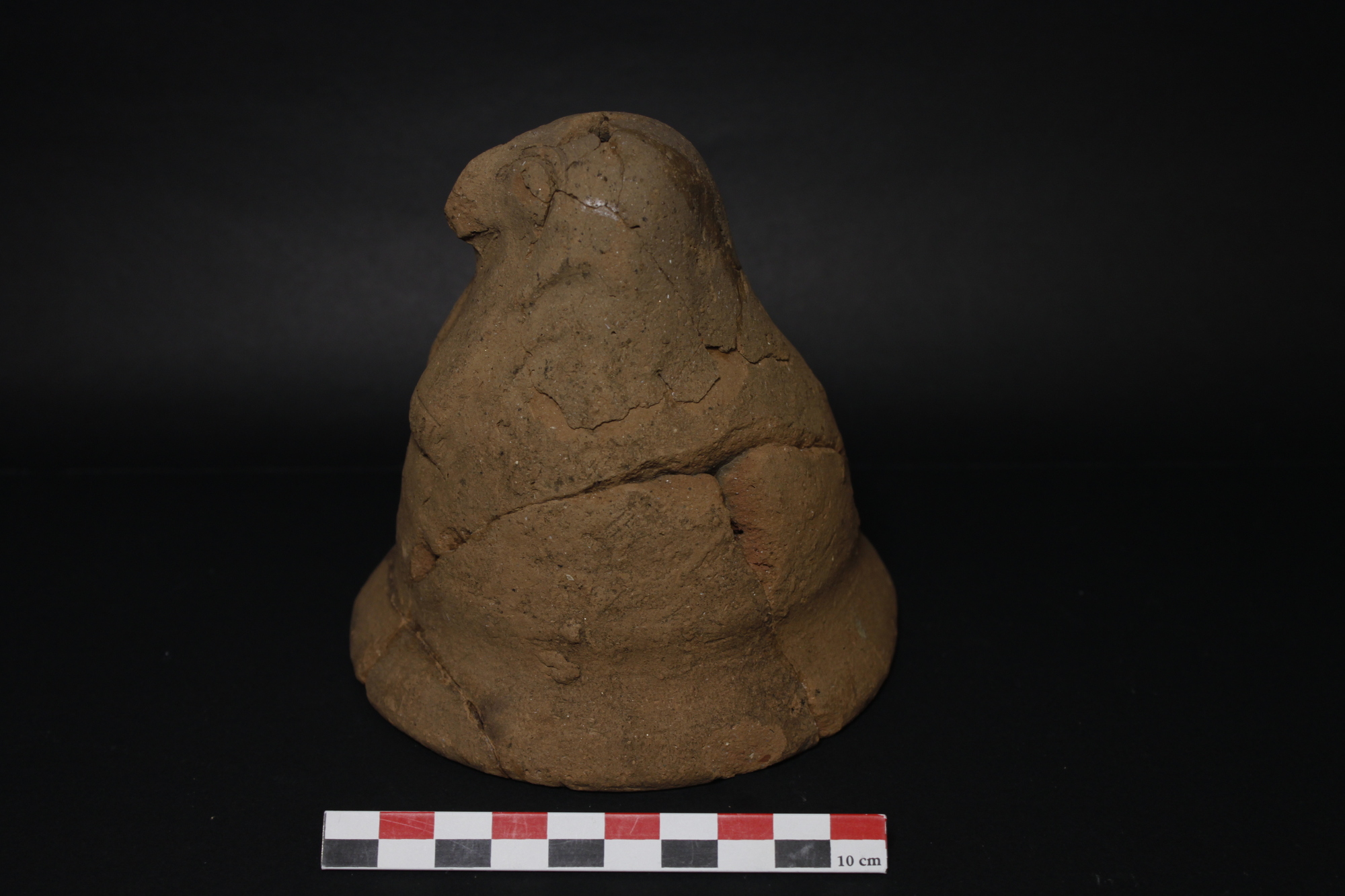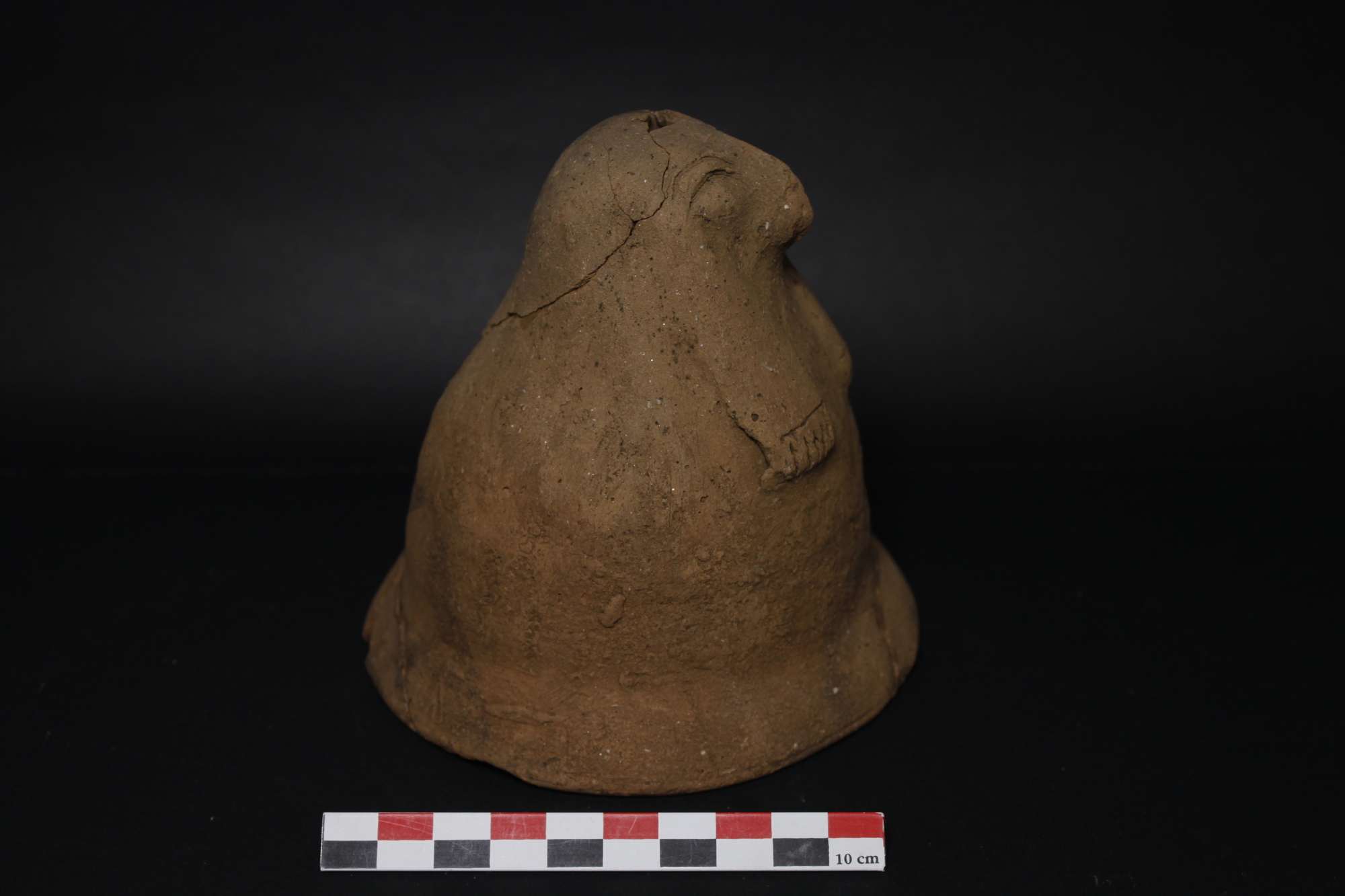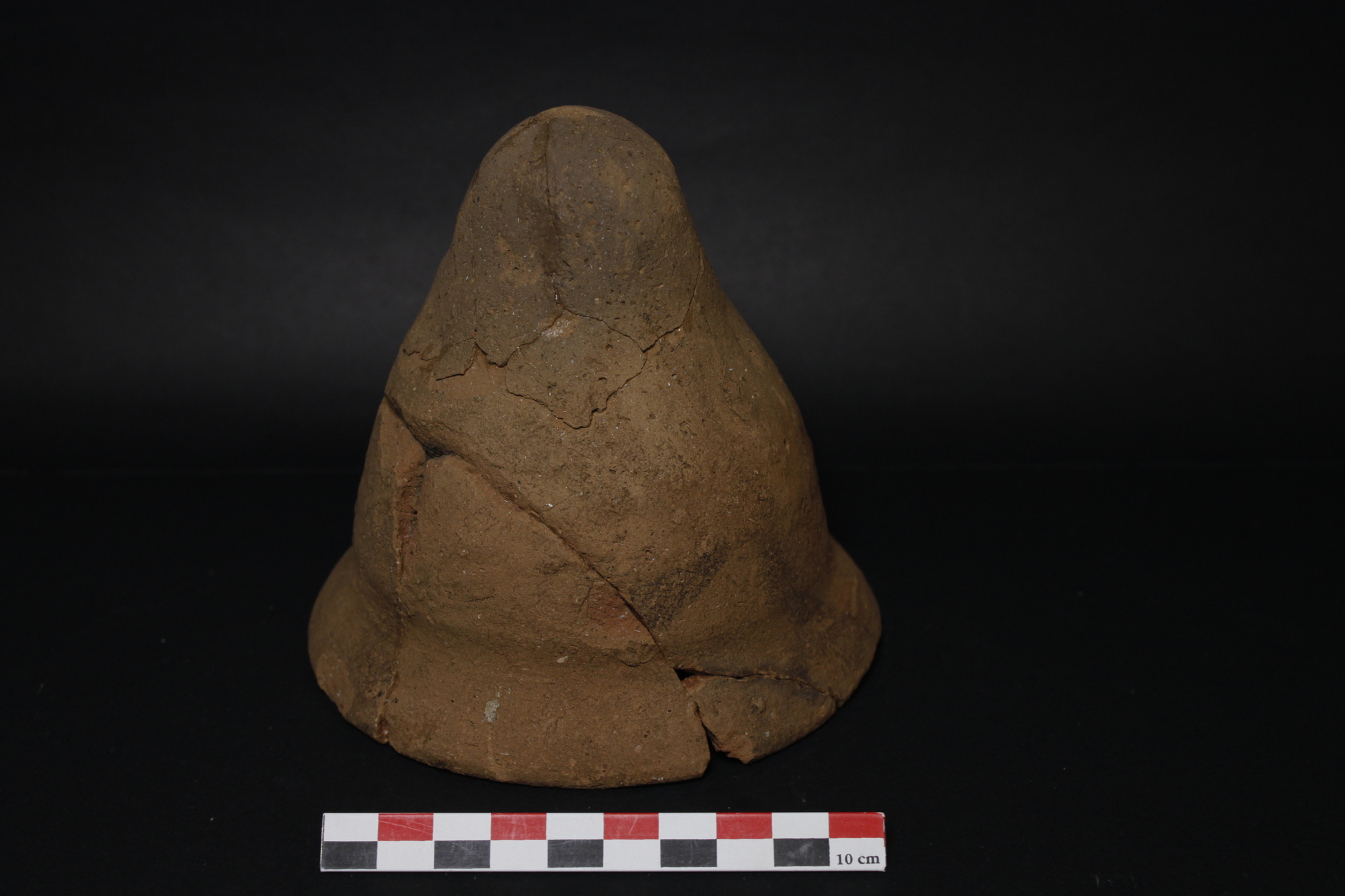Canopic Lid
Canopic Lid
Egyptian; New Kingdom - Late Period; 1550-332 BCE
Canopic jars were used in the preparation of the body for mummification. Internal organs were not always removed during the burial process, but when they were, they were often wrapped and placed in a box or in individual jars. This may be a canopic lid depicting Qebehsenuef, one of the four sons of Horus.
It was during the New Kingdom (1550 BCE – 1069 BCE) that jars began to be capped with the animal heads of the four sons of Horus rather than human heads. Qebehsenuef, the falcon-headed son of Horus, usually protected the intestines. By the Third Intermediate Period (1077 BCE – 664 BCE) the internal organs often remained in the body and the canopic jars were only used symbolically. Canopic jars were used in funerary practices up until the Roman period.
-
Couvercle canope
Égyptien; Nouvel Empire - Basse Époque; 1550-332 AEC
Les vases canopes étaient utilisés lors de la préparation du corps pour la momification. Les organes internes n'étaient pas toujours retirés au cours de l'inhumation, mais lorsqu'ils l'étaient, ils étaient souvent enveloppés et placés dans une boîte ou dans des pots individuels. Il s'agit içi peut-être d'un couvercle canope représentant Qebehsenuef, l'un des quatre fils d'Horus.
C'est au cours du Nouvel Empire (1550 - 1069 avant l’ère commune) que les jarres ont commencé à être coiffées des têtes d'animaux des quatre fils d'Horus plutôt que de têtes humaines. Qebehsenuef, le fils d'Horus à tête de faucon, protégeait généralement les intestins. Lors de la Troisième Période Intermédiaire (1077 - 664 avant l’ère commune), les organes internes restaient souvent dans le corps et les vases canopes n'étaient utilisés que symboliquement. Les vases canopes continuèrent à être utilisés dans les pratiques funéraires jusqu'à l'époque romaine.




